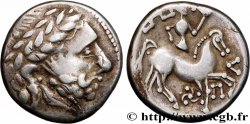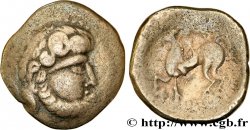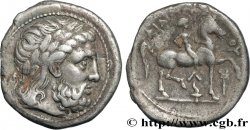bga_663937 - DANUBIAN CELTS - IMITATIONS OF THE TETRADRACHMS OF PHILIP II AND HIS SUCCESSORS Tétradrachme au cavalier, imitation de Philippe II
Not available.
Item sold on our e-shop (2021)
Price : 550.00 €
Item sold on our e-shop (2021)
Price : 550.00 €
Type : Tétradrachme au cavalier, imitation de Philippe II
Date: (IIe-Ier siècles avant J.-C.)
Metal : silver
Diameter : 22,5 mm
Orientation dies : 12 h.
Weight : 12,65 g.
Rarity : R2
Coments on the condition:
Très bel exemplaire avec un joli revers fin
Catalogue references :
Predigree :
Exemplaire provenant d’une vente Vinchon à Drouot le 14 mai 1982, lot n°134 et de la collection Aymé Cornu
Obverse
Obverse legend : ANÉPIGRAPHE.
Obverse description : Tête laurée de Zeus à droite ; grènetis.
Reverse
Reverse legend : LÉGENDES GRECQUES.
Reverse description : Cavalier au pas à droite, tenant une palme de la main droite ; le cheval lève l'antérieur à droite ; entre les jambes du cheval, un H.







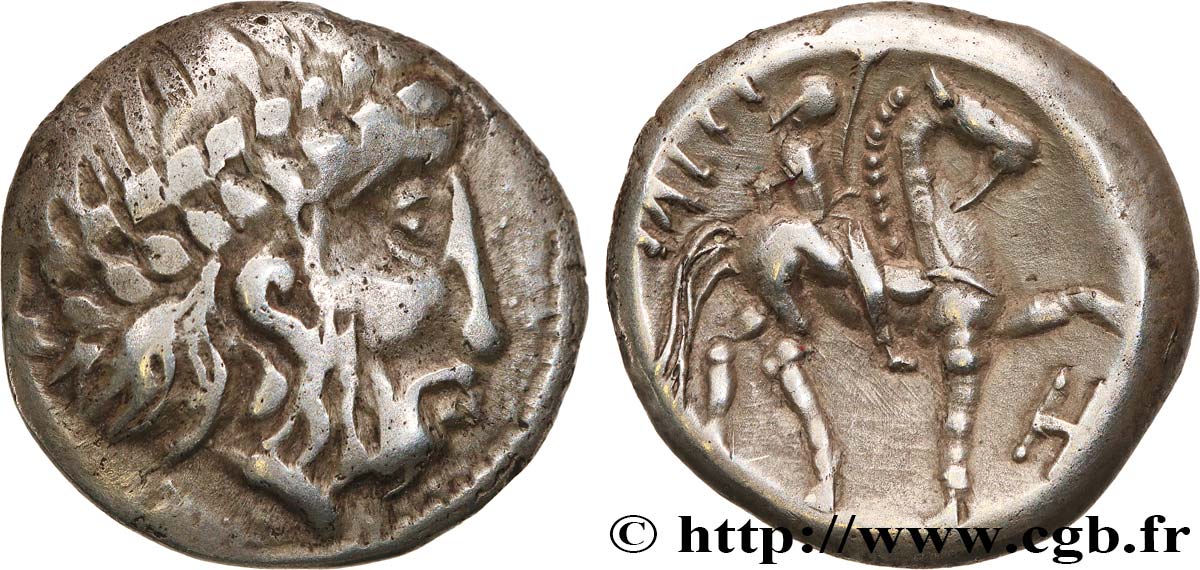
 Report a mistake
Report a mistake Print the page
Print the page Share my selection
Share my selection Ask a question
Ask a question Consign / sell
Consign / sell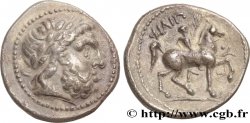
 Full data
Full data